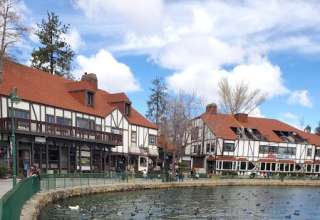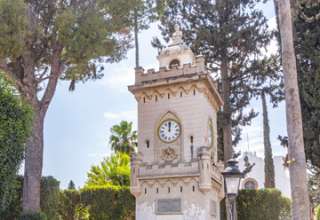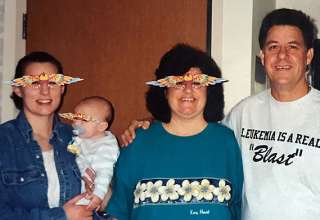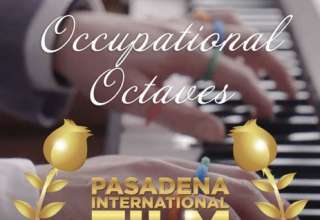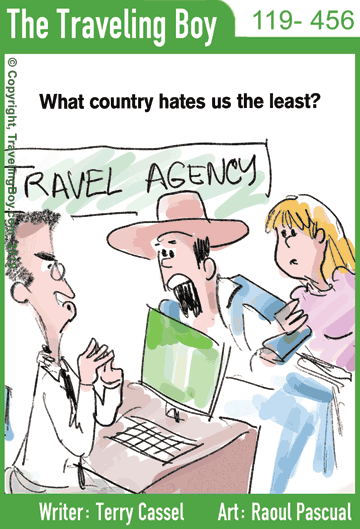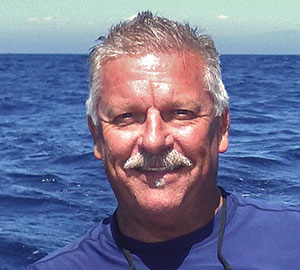In early 2015, a group of my friends decided to hike up Mt. Whitney, a peak of 14,505 feet in the Eastern Sierras of California. The idea came from our buddy John Marsden. He often was the catalyst of our adventures, and he liked it when his friends could join him on these trips. Many of us in this circle of friends were hikers, and have even done hikes together. Some of us hiked often, and some occasionally, but we all decided we were going to train to prepare to summit the highest peak in the lower 48 states.
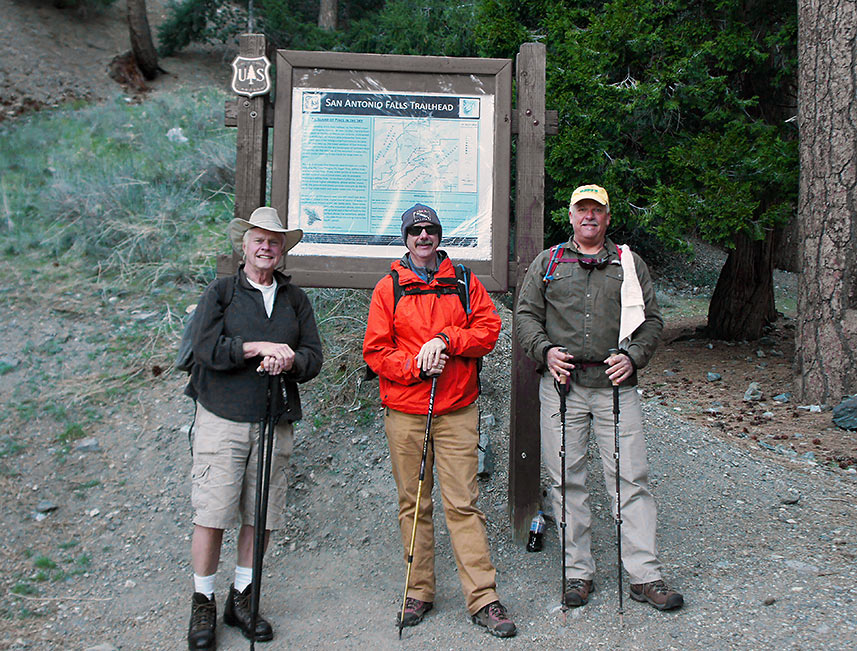
I was especially excited at the prospect of going on this trip. I was already an avid hiker and I was trying to accomplish as many hikes in the book Afoot and Afield in San Diego County as I could. This book inspired me to hike areas I might not have tried otherwise, but Mt. Whitney was the temple of hiking. To reach the highest point in the United States, outside of Alaska, was an accomplishment I needed for my ego and my soul. A place that very few people have ever been or could ever be. I was committed to being ready for this journey.
We started with a January 3rd meeting of the men who were serious about joining us. There were about five of us at first. John had already researched much about the hike and laid out his plan for the trip. We were to drive up to Whitney Portal first. It’s the campground at the end of the road from Lone Pine that many call “base camp.” We were going to camp two nights there and hike on one of the days to acclimate us to the higher altitude.
At the February meeting, a new man showed up who was interested in hiking Mt. Whitney with us. He knew some of the members of our hiking team already because, like the rest of us, he was a member of a men’s group called the Mankind Project. The new man, Larry, told us he had hiked for 20 years and is up for the challenge. He was 74 years old but, who am I to question his capabilities. The rest of the group welcomed him, and so did I.
LESSON #1: When someone says he has been hiking for 20 years, it may be important to find out exactly when those 20 years were.
We decided at the meeting to start the SoCal Six Pack with a hike up Mt. Baldy. At 11 miles, it’s the shortest of the six hikes, yet it’s a difficult 4,000-foot elevation climb to the 10,068-foot summit. The date was set for March 23rd. We were about to kick our training into high gear.
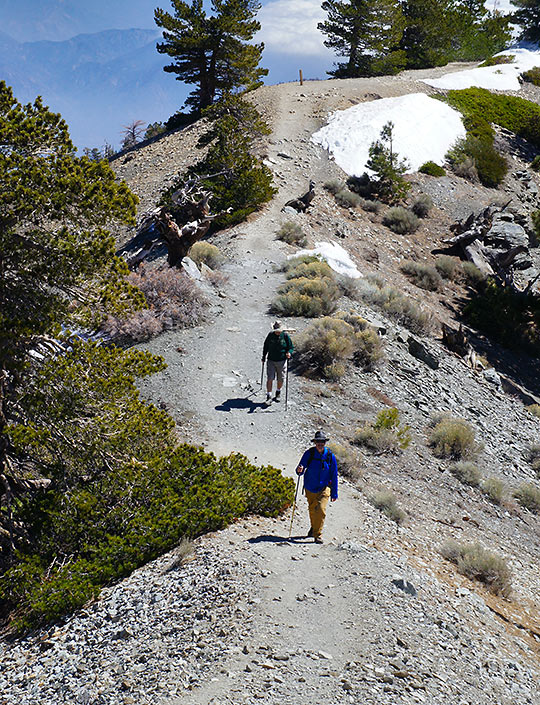
The day came and only three of us opted to hike Mt. Baldy. So, John, Larry and I drove up early in the morning so we could get a good start and have plenty of time to do the hike. The start of the hike was a dirt road at the east end of the town of Mt. Baldy that headed up to the Mt. Baldy ski area. The directions showed that there is a trail that heads off the dirt road. The word was that the turnoff trail is poorly marked. Apparently, some local environmentalists often take the signs down to deter hikers from ruining the pristine area. Well, they were successful. We did not see a sign, nor did we see a trail that ran off the dirt road. Luckily, the other end of the trail head for the loop can be found at the ski area, so we continued up the dirt road until we found the trail.
On our way up the dirt road, Larry was stopping frequently to rest. These stops, in addition to his slow pace, made our progress to the peak in question. As we all chatted, we discovered that it had been many years since Larry had hiked. Apparently, his twenty years of hiking was not a recent span of time. What also came up was that Larry had some sort of respiratory issue that he would not elaborate on.
We continued on the trail from the ski area and up Devil’s Backbone. This 2.6-mile section of the trail is a bit narrow with a very big drop on both sides of the trail. Over the years, a number of hikers have fallen to their death on this part of the trail, especially during the winter when conditions can be wet and/or icy.
This particular day showed some snow and ice on the ground along the backbone. We were aware of this condition before starting the hike so we were careful to stay on trail and go slow. Most of the hikers who died, or needed rescue, were venturing too far off trail.
We successfully made it to the summit. Once there, John and I chatted about how much time it took to reach the top. We were concerned that we were unlikely going to get back to the trailhead again before nightfall at the expected pace. Since it was March, the days were shorter and it was getting dark around 6 pm. We needed a plan to safely descend back to our vehicle.
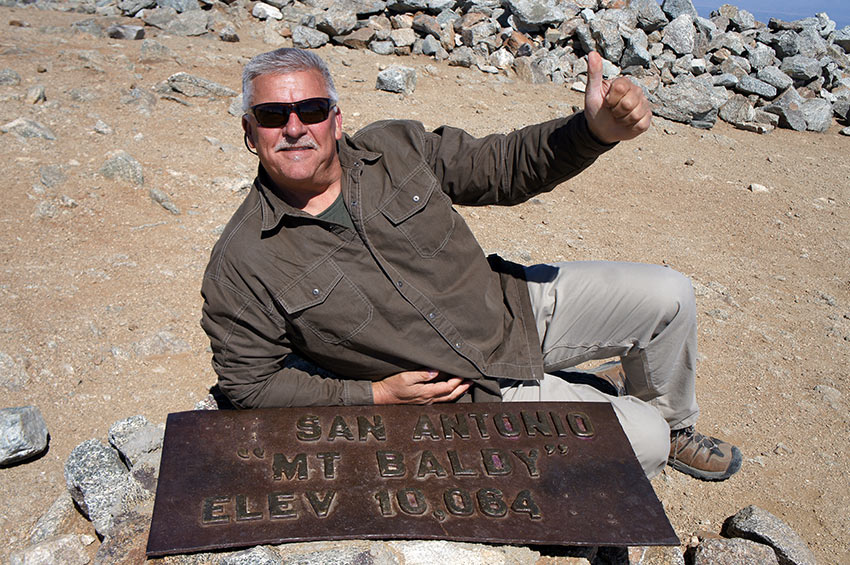
Being the stronger hiker of the group, I made the call to hike back down on the short leg of the trail loop. I was planning to quickly hike down to the car, and drive up the dirt road to the ski area parking lot. John was to hike with Larry back down Devil’s Backbone while it was still light, and meet me in the parking lot before dark. There, I could pick them up and drive us down to town. With that plan agreed upon, I set off on my descent.
LESSON #2: Be sure that all plans are actually agree upon. Repeat plans if necessary to assure everything is understood.
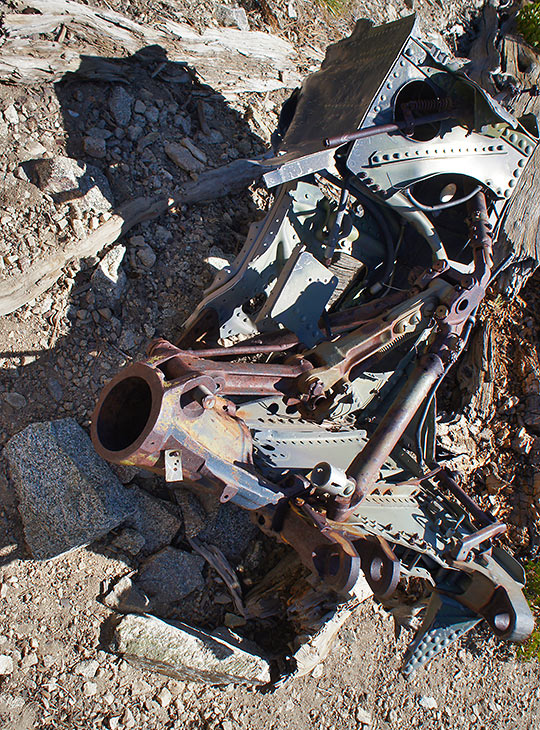
My initial descent down the trail went smoothly and quick, but at some point I got off trail. I could blame the poor trails, or lack of signage, or the snow that covered some of the area, but it mostly came down to just trying to hurry and not paying enough attention to my surroundings. I veered off course, following a worn path that lead to an old plane crash, thinking it was the main trail. Research later showed that the wreck was from 1949 when two USMC F-6 Hellcats crashed together during a training mission. I continued until I could not see any signs of a trail. I knew I had to head downhill so I just kept going down until I ended up getting into Goode Canyon. This canyon is a steep and rugged descent with large boulders and very little access for hiking. My descent was more like climbing over, sliding down and squeezing around boulders than hiking. It was very difficult and I was getting exhausted. Luckily, my GPS was telling me that I was heading in the right general direction, so I pressed on.
As I was trying to find my way to the car, John and Larry were making their descent back down. Unfortunately, as I found out later, they were heading down the same trail as I did, instead of heading back down the way we came up, towards the ski area. This is where the trouble really started. John’s account was that they decided to go the same way I did because they knew it was shorter. They got off trail the same way I did and saw the same wrecked planes. They continued downhill until the trail faded but figured that they would eventually hit the road if they kept on. Once down into the canyon, John realized that going up the steep canyon was too difficult, especially for Larry, who was very tired by this point.
I made it to Glendora Ridge Road, about a mile west of the town of Mt. Baldy, just at dusk. I was exhausted and too tired to walk back to my car, but I needed to meet up with John and Larry as quickly as possible. I was waving down passing cars to get a ride to my vehicle when a woman in a jeep stopped to ask what I needed. When I told her the short version of my story, she agreed to help me out by giving me a ride to my car.
During the short ride to my car, I realized in our conversation that I could not have been luckier than to have Missy pick me up. She was a long-time resident of the area and an avid hiker. She and her husband Ron owned the Mt. Baldy Lodge and restaurant. After hearing my story, she dropped me off at my car and told me to contact her at the restaurant if I needed her help.
I drove my car up the dirt road toward the ski area in hopes of finding John and Larry on their way down. Unfortunately, I was greeted by a locked gate. I decided to park there and hike up to see if I could meet up with them. I hiked all the way up to the ski area, which was no easy feat since I was still pretty exhausted from my adventure up to then. No sight of my hiking friends anywhere. I did not feel I could safely hike up Devil’s Backbone in the dark and in my physical condition, so I hiked back to my car and drove to the Mt. Baldy restaurant.
Once there, I found Missy and asked for her help. She had keys to the locked gate so we drove her jeep up to the ski area and looked for the hikers. They were not to be found. Even at a slow pace, I expected they would be there by then. I was growing more concerned now. It was late and had been about 5 hours since I left my fellow hikers. Were they already back and roaming around town somewhere? We drove back down to the main road and went to a couple of spots where Missy said we would be able to see their lights on parts of the trail if they were coming down that way. That was assuming they had lights. We saw nothing. We drove into town and looked around to no avail.
LESSON #3: Before embarking on a serious hike, make sure all hikers in your party have the 10 essentials. They include:
- Navigation: A map and compass, GPS or some other devices so you don’t get lost.
- Sun Protection: Sunscreen and sunglasses protect against sun damage.
- Extra Clothing: Especially for any possible cooler weather in case you get lost.
- Illumination: A flashlight or headlamp could save a life in the dark.
- First Aid: Bandages, bug spray, medicines, antiseptic, etc.
- Fire: Bring matches and/or other fire starters in case you’re lost in cold weather.
- Tools: Have a multi-tool at least. A knife, screw driver, or scissors can be handy.
- Nutrition: Bring more than you will need on the hike in case you get lost.
- Hydration: Bring more water than you will need for the expected hike.
- Shelter: Consider an emergency tent, space blanket or other protection.
Missy had another thought. Maybe they came the same direction I did, and got off trail, like me. She drove to a couple of spots where someone might come out if they were off trail. We did not find them anywhere. It was getting late. It was getting dark. And it was now serious. It was time to call for rescue. We went back to the restaurant and Missy made some calls.
The Mt. Baldy Volunteer Fire Station was soon all a buzz with volunteer firefighters, sheriff, local search-and-rescuers and others wanting to help. They quickly set up an incident command and dispatched the local volunteer search-and-rescuers to work their way up the trail to see if the hikers could be found. Additionally, the Fontana Sheriff’s Air Rescue helicopter 306 was dispatched to search the mountain and the canyon areas. I stayed at the fire station to wait for any word, and to provide any information I could. I also took the opportunity to call the wives of both men. I let them know what happened and that there was a full search-and-rescue operation going on. I told them I would keep them informed of further information. They didn’t seem to panic, but they both were obviously distressed by the news. I couldn’t help but think they didn’t know everything I did about Larry’s condition, and it was better to keep it that way for now.
It was after midnight and reports from the search-and-rescue team, as well as the helicopter, came in with negative results. I was very uneasy about what might have happened to the guys, especially considering Larry’s age and physical condition. As a retired career firefighter and rescue specialist, I have been in many, many situations where I was challenged with finding, rescuing, and treating victims of a variety of emergencies. I can generally handle this type of situation with relative calm. This is different. I am emotionally involved in this one. These are my friends and I feel somewhat responsible for the outcome.
After about two hours of searching, the helicopter pilot radioed that they had to discontinue the search. His maximum flight hours were about to be reached, and he had had no luck spotting the hikers. They were going to have to stop for the night and resume at daybreak. Soon after hearing that, the local volunteer search-and-rescuers radioed that they made it all the way up to the summit and were unable to find anyone. They were going to continue to search down the loop of the trail. I was starting to get a bit emotional about the possible outcome. All we could do at this point was wait for daylight.
During the evening, the lost hikers continued to make some progress down the canyon. It was very difficult for both of them as they pushed through the obstacles of large boulders and prickly bushes. John would push ahead and then wait for Larry to catch up. John’s fear of being stuck overnight was driving his behavior to keep pushing. At one point, both hikers discussed bedding down for the night but they were not equipped for camping. Even so, the conversation calmed John and they decided to continue as far as they could.
The obstacles became harder to navigate as they descended down the canyon. John would get so far ahead that he would lose sight of Larry so they would yell back and forth at each other to keep in contact. John would yell at Larry, explaining how he got through an area in hopes that Larry could navigate the same way. Both men were getting extremely tired by this time.
John worked up the east slope of the canyon, trying to find a trail of some kind. The slope was covered in gravel and the footing was very difficult. At one point, John slipped on the gravel and ended up sliding downhill for quite a way. When he came to rest, he called out to Larry and got no response. He tried again but nothing. John thought that maybe Larry found the trail and headed back. John did not hear from Larry again for the rest of the night.
John decided to continue to work his way down the canyon along the east slope as long as there was light, hoping he would soon see a trail or the road. He continued for a while until darkness approached. John thought he could see a road ahead but it was at least two miles away through very rough terrain. Exhausted, he looked for a place to bed down for the night, thinking he could get injured if he continues in the dark. When it gets dark on a mountain, it gets DARK. Many people may not appreciate that unless they have experienced it. Trying to climb boulders and navigate around prickly bushes is dangerous when there is no light.
John found a good place to rest for the night. It was quite chilly so he opened his emergency space blanket and wrapped up in it to stay warm. John then took out his flashlight and set it on a rock next to him, then made stock of his supplies. He had plenty of water for the night and some food. His biggest fear at this point was not the dark or the cold, or even being alone…it was the possibility of bears. Now John debated what to do with his food. Should he keep it close or should he place it farther away from him. Bears have a great sense of smell and can detect food from quite a distance so generally campers keep food in special metal boxes or up a tree. John decided to keep it in his pack and not open it.
Throughout the long night John’s senses were heightened. He did not get much sleep worrying about bears, if he would be rescued, where his buddy Larry was, and the dropping temperature. To calm his fears, he started to sing made-up songs to himself in a key that would definitely crack a window. “I’ll make it out of here, out of here. Tomorrow will come in eight hours, just a long eight hours.”
After a few hours, John heard a sound that got his attention. It was the sound of a helicopter. John was so excited that he reached for his flashlight to signal the approaching aircraft. But it was not there. He looked all around but could not find it. He kept looking at the approaching helicopter, then looking for the flashlight. John became angry. “Where the hell is my flashlight?” It was nowhere to be found. He gave up looking and concentrated on the helicopter. He saw that the copter had a search light, so John moved to an open area where he thought the helicopter could see him better. For the next two hours the helicopter flew overhead. It flew up and down the canyon area and into other smaller adjacent canyons. Then it would disappear to search other areas. John would get excited when it was searching around his area and curse it when it left. When the helicopter was near John, the search light seemed to hit everywhere except where John was. He was getting very frustrated.
Eventually the helicopter flew off. John figured it was low on fuel and probably wouldn’t return until morning. John found an area under a big pine tree with a bed of pine needles under it that he thought would be comfortable and warm and bedded down again. He slept from 2 am until 6 am, waking just before sunrise. John gathered his supplies and looked for another area where he could be seen by the helicopter that he expected would begin the search again soon. He tied his emergency blanket to his hiking pole thinking the reflective silver blanket would be a good signal device. John waited.
At about 6:30 am the original Sheriff’s rescue helicopter, and a smaller spotter helicopter, were sent up again to look for our hikers. The search-and-rescue team had been hiking all night, but now they moved into Goode Canyon. After about an hour into daylight, the smaller helicopter spotted John Marsden. Using their loud-speaker they asked about John’s condition and told him to stay put before taking off again. John figured that helicopter was not suited to rescue so he waited patiently to see what came next. After what seemed like hours, a larger helicopter showed up. It seemed the smaller helicopter was showing the larger one where John was, but then they left again, flying back down the canyon. Shortly after, the larger helicopter returned, only to fly off again. This was frustrating John.
After several minutes, the larger helicopter reappeared. It hovered overhead for a while until John saw a man being lower down with a cable. The rescuer landed nearby, unhooked and greeted John. John was never so happy to see anyone in his life. The rescuer didn’t waste time and prepared John to be lifted into the helicopter by putting him in a special rescue suit. John was hooked up to a cable and lifted up to the hovering aircraft. Feeling safe, John was now having fun. An interesting bit of irony here. On the hike up the day before, we had talked about things we had never done in our lives. John said he had never been in a helicopter. Be careful what you wish for.
The lost hikers’ wives, Debbie and Jackie, both decided to drive up and meet me at the fire station. They arrived in tandem around 7 am. I let them know that Jackie’s husband had been found but they were still looking for Larry. Jackie was obviously relieved.
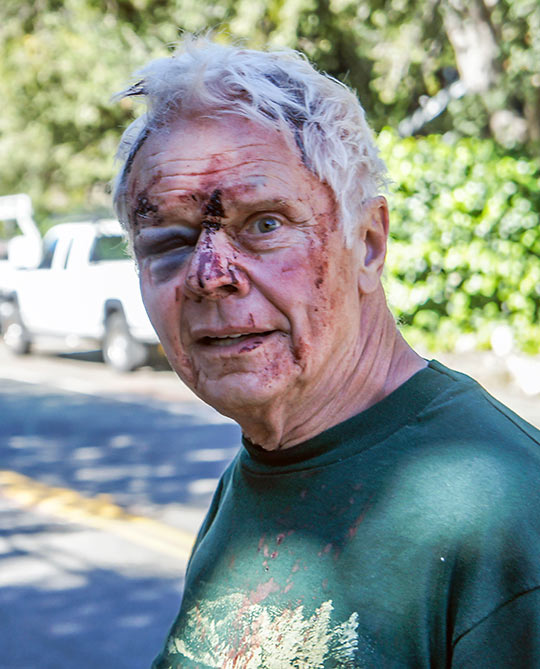
Right after Debbie and Jackie arrived, Larry was found by the team searching on foot. He was in an area hard to see from the air…tired, cold and a bit injured. Because of his injuries, he had been rescued first. The search-and-rescue team worked with the air crew of the rescue helicopter to get Larry ready for the 90-foot lift into the helicopter, and to Cow Canyon Saddle where he was checked out by paramedics and transported to the fire station.
When Larry arrived at the fire station around 7:30 am, he was in good spirits but he had cuts and bruises on his face and neck, as well as a swollen black eye that completely blocked his vision. He told me that he kept falling while trying to maneuver over the boulders in the dark. His wife, Debbie, showed emotions mixed with happiness that he was found, and anger that he took the risks that he did. He was made to promise on the spot that he would not go on the Mt. Whitney hike with us. He agreed.
John was airlifted out around 9 am to the same area where the paramedics checked Larry out, and gave him a clean bill of health. A sheriff asked John some questions for his report. After that, John asked if he could meet the rescuers to thank them. He went to where the rescuers were gathering to thank them when one of the rescuers asked to see the bottom of his boots. The rescuer said that those were the boots they had been tracking for about 1/3 of the way down until they lost the tracks.
John was then transported to the fire station where the command post was. He ran over to me and we hugged, relieved we were both safe. John told me that most of the time he was lost, he thought it was me in need of rescue. He thought Larry had already made his way out. John hadn’t even noticed that his wife was there at first. Once we were all together, hugged, and realized we were safe and relatively unscathed, we met with the Incident Command team to give them all the particulars for their incident report. We thanked the team profusely for their efforts and I professed we would happily donate to their organization soon. Each of the rescued hikers loaded into his vehicle with his wife for the drive home. John, Jackie and I decided to stop for breakfast while Larry and his wife headed home. It was interesting to see our story on the news while we were eating our breakfast in the restaurant. John exclaimed “Damn, I’m a star but not the way I thought it might happen.”
On my drive home alone, I was able to contemplate the 30-hour episode. I realized how it could have gone so much worse than it did. Larry could have gotten seriously injured from one of his falls. One, or both of them, could have encountered one of a number of wild animals in that area. In his physical condition, Larry could have suffered from dehydration or exposure to the cold. None of that happened, so it’s a happy ending with an interesting story to be told.
I saw Larry once more, a couple of months after that fateful trip. The three of us met at a coffee shop to discuss what happened, and the lessons learned. Larry quit hiking after that day, as requested by his wife, and they moved to Memphis soon after. He died of cancer on September 5, 2019. John and I completed the Mt. Whitney summit, along with three other friends, on September 16th of that same year. We definitely applied the lessons learned from the Mt. Baldy hike. John and I still see each other. We travel and hike together, and talk about this event now and then. Mostly, we each learned some lessons as a result.
LESSON #4: If you get lost while hiking, stay in one place so search-and-rescue can find you.
LESSON #5: Don’t split up with fellow hikers when you get lost.
In a less technical aspect, I learned that living sometimes has a price, but do it anyway. The only other choice is dying and that will happen soon enough. Just do the best you can to be prepared before setting off on an adventure.
I also learned to be thankful for those willing to help. Missy spent all night trying to help me find my friends. She fed me, drove me around to search for my friends, made the necessary contacts for a rescue, and was supportive. She was so amazing.
The entire rescue effort, volunteer and paid members, selflessly worked all night to help find the men. Even after a long career of a similar service, my perspective in this situation was different. And so, my appreciation is so very heartfelt.
I still hike, go on adventures, and travel a lot. I try to be prepared before I go. I still pay the price occasionally and I’m still learning lessons, but overall… life is an adventure and I’m enjoying the journey.
